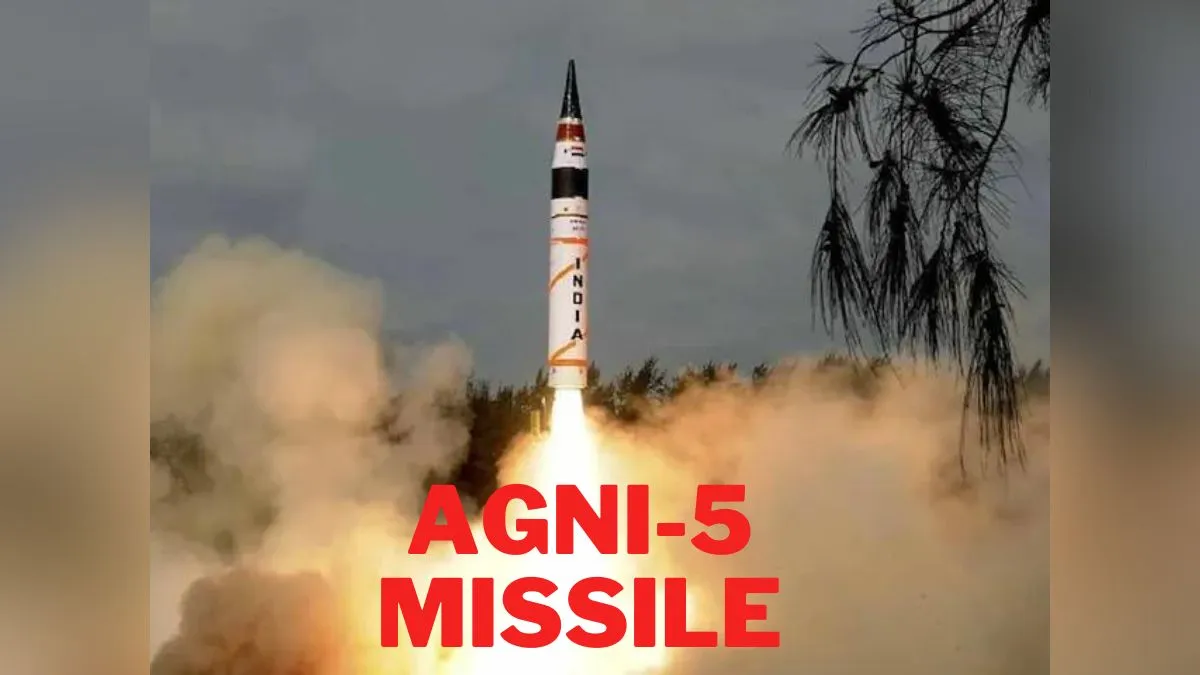Agni-5 missile launch: India achieved a significant milestone on Monday (March 11) with the successful flight test of the Agni-5 missile, marking a major advancement in indigenous defence capabilities. The test, conducted under 'Mission Divyastra', showcased India's ability to deploy multiple warheads, placing the nation among a select group of countries with such capability.
Launched from APJ Abdul Kalam Island in Odisha, the Agni-5 missile, equipped with Multiple Independently Targetable Re-entry Vehicle (MIRV) technology, met all designated parameters, as confirmed by the Defence Ministry.
Prime Minister Narendra Modi and Defence Minister Rajnath Singh extended their congratulations to the scientists of the Defence Research and Development Organisation (DRDO) for the successful test, highlighting the significance of this achievement in bolstering India's defence preparedness.
What is 'MIRV' technology?
The recent test flight of Agni-5 marked a significant milestone as it was the first demonstration of the MIRV technology, aimed at deploying multiple warheads at distinct locations in a single launch. This advancement underscores India's progress in defence capabilities. Equipped with indigenous avionics systems and high-accuracy sensor packages, the Agni-5 weapon system ensured that the re-entry vehicles reached their target points with exceptional precision.
The concept of Multiple independently targetable Reentry Vehicles originated in the early 1960s, allowing a single missile to carry multiple nuclear warheads, each capable of striking different targets independently. This innovative technology enhances the versatility and effectiveness of missile systems. The United States pioneered the development of MIRV technology, deploying MIRVed Intercontinental Ballistic Missiles (ICBMs) in 1970 and MIRVed Submarine-Launched Ballistic Missiles (SLBMs) in 197.
How many countries have MIRV capabilities?
Several nations, including the United States, the United Kingdom, France, Russia, China, and India, have established themselves as possessors of MIRV technology, a capability enabling the deployment of multiple warheads. MIRVs were not primarily designed to counter ballistic missile defences. However, they pose a significant challenge to defence systems due to their ability to independently target multiple locations, rendering them more difficult to intercept compared to traditional missiles.
Know about Agni-V missile
The MIRV feature ensures that a single missile can deploy multiple warheads at different locations. Agni-V missile has a range of up to 5,000 km and it can bring almost the entire Asia including the northernmost part of China as well as some regions in Europe under its striking range. India has already carried out a number of tests of Agni 5 but it was for the first time that the flight test was carried out with MIRV.
The weapon system is equipped with indigenous avionics systems and high-accuracy sensor packages, which ensured that the re-entry vehicles reached the target points within the desired accuracy. The Agni 1 to 4 missiles have ranges from 700 km to 3,500 km and they have already been deployed. In April last year, India successfully carried out the maiden flight trial of an endo-atmospheric interceptor missile from a ship off the coast of Odisha in the Bay of Bengal as part of its ambitious ballistic missile defence programme.
ALSO READ: Agni-5 missile: Proud of our DRDO scientists for Mission Divyastra, tweets PM Modi

